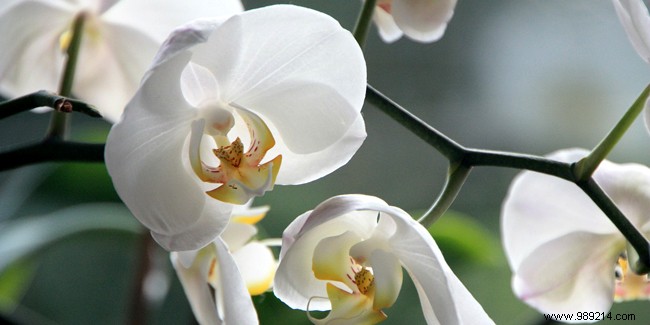
The orchid is a flower present everywhere on the planet. It must be said that there are more than 30,000 species. Besides, recently, you have one at home. As beautiful as it is fragile, the orchid needs specific care to remain beautiful for as long as possible and above all to bloom again year after year. How to care for an orchid? Answers!
An orchid, or Orchidaceae, is not a flower but a family that has more than 30,000 different species of flowers. It is one of the flower families that offers the most variety. The most frequently cultivated are the phalaenopsis orchids. Native to Asia and Central America, the orchid is a tropical plant that finds its place in our interiors.
Orchid flowers can be white, young, pink, red and even purple. These plants are grown from March to May and can flower throughout the year. The foliage of orchids is evergreen and the perennial can reach a height of one meter.
This is one of the first questions to be answered:where to place an orchid? Should we favor a shady or sunny space? It's all about balance. An orchid needs light to flower. However, if it is in direct sunlight all day, it will die. Therefore, favor a semi-shaded space where the ambient temperature is between 18 and 21°C. Never place your orchid near a heat source such as a heater or fireplace. From the month of May, you can take your orchid out, but beware of the high temperatures. Even if the plant is exotic, it will be weakened.
An orchid waters itself when it needs water. The rhythm therefore depends on the season and the warmth of the room in which it is placed. In general, an orchid should be watered 1 to 2 times a week in the hot season and 2 to 3 times a month the rest of the year. For optimal watering, vaporization is recommended.
You must ensure that the soil is always moist. Do not overwater an orchid. Avoid drowning it or letting it soak, even when you return from vacation. If your orchid is overwatered, its roots may rot. Prefer rainwater which is less calcareous than tap water. Spring water is also a good alternative. Attention ! Do not leave your orchid in stagnant water.
The flowering of the orchid only lasts a few weeks and it takes several weeks before it blooms again. But how to boost this flowering? Here are a few tips. When a flower fades, cut the stem above the 2 th eye. It is also possible to cut the entire stem, but only if the orchid has already had several blooms. The process is the same throughout the life of the orchid! Thus, she regains strength and gives flowers.
Like all houseplants, it is recommended that orchids be repotted every 2 or 3 years. This care is essential because the soil no longer contains the nutrients necessary for the good health of the flower. Repotting is done in several stages. Choose a shallow pot and use special orchid potting soil. This is sold in garden centers. It consists in particular of pine bark. The fertilizer is used sparingly and above all, it must be adapted to orchids. When repotting, it is essential to cut off dead roots. Avoid cleaning the other roots or removing the substrate around them. Water your orchid and put it back where it was!
Many diseases can affect orchids.
To treat diseases related to the presence of a fungus, the orchid must be repotted and the substrate changed. Make sure that the water used for irrigation is of good quality.
Orchids can also be infested with scale insects. This parasite measures 3 to 5 mm in length and likes warm and humid places. To get rid of it, soak a cotton swab in beer, alcohol at 90°C or black soap and clean the infected areas. There are also solutions sold in garden centres.
A well cared for orchid can live for 20 years!